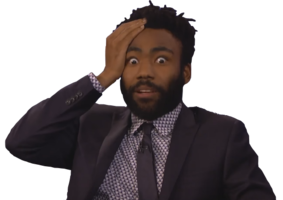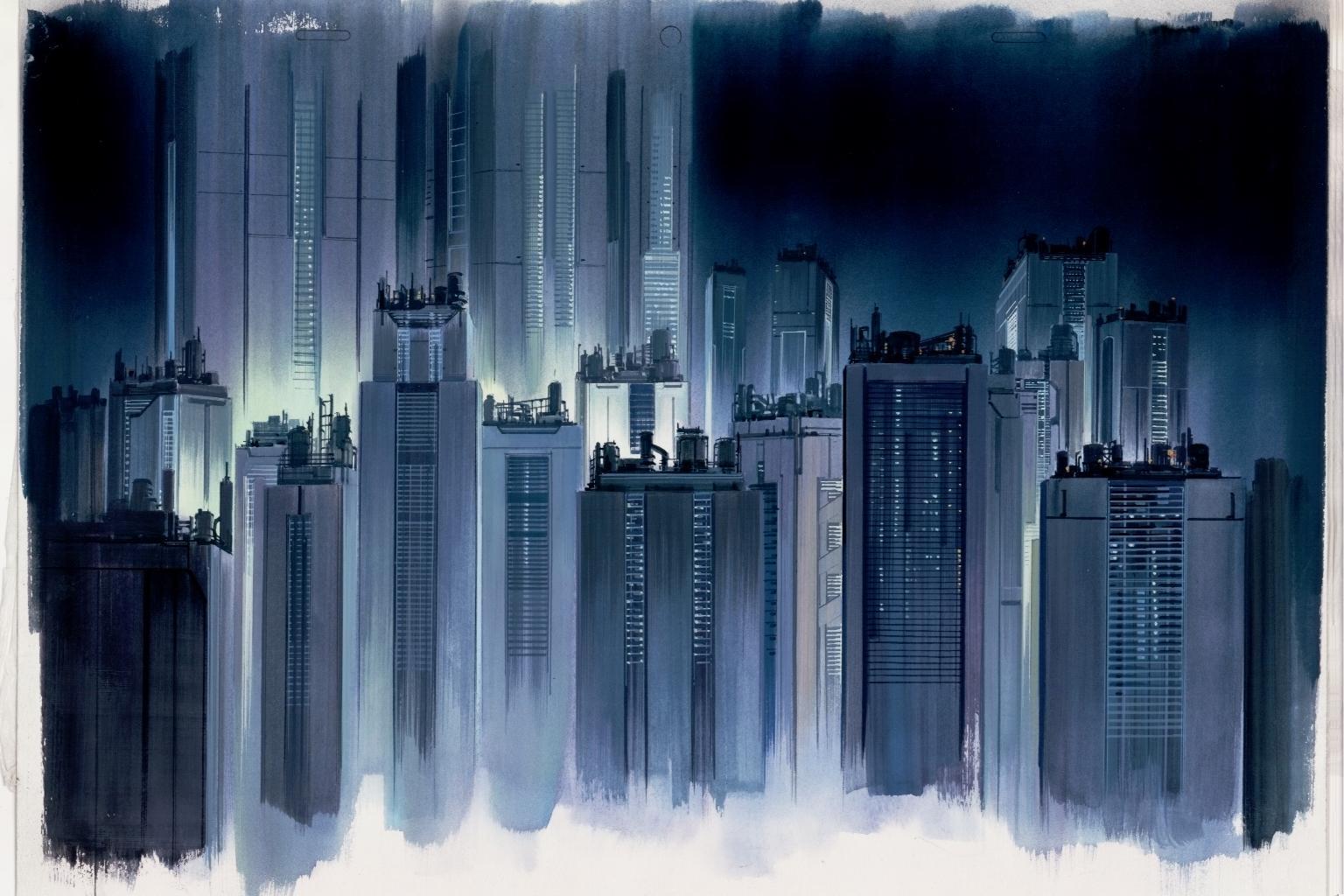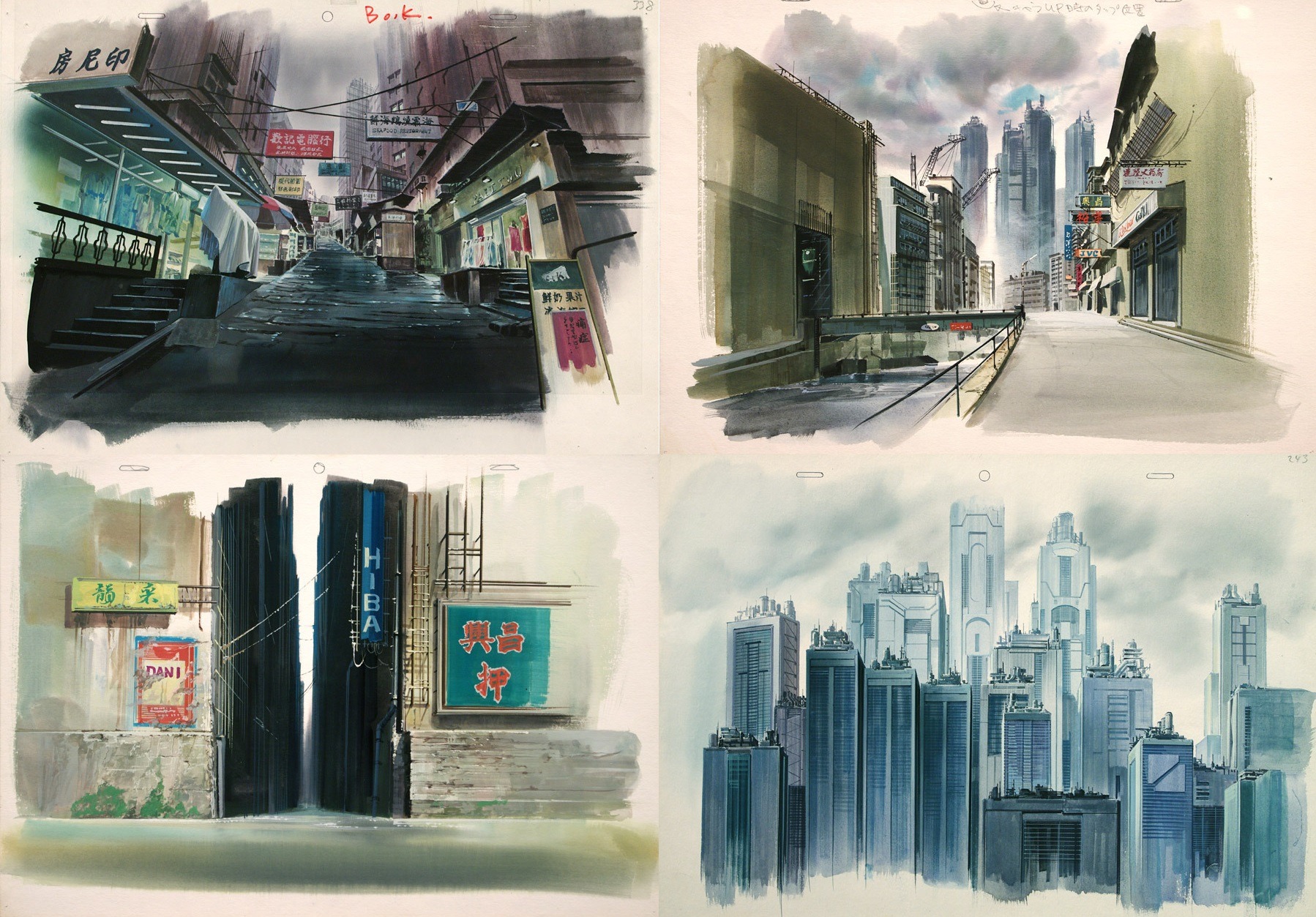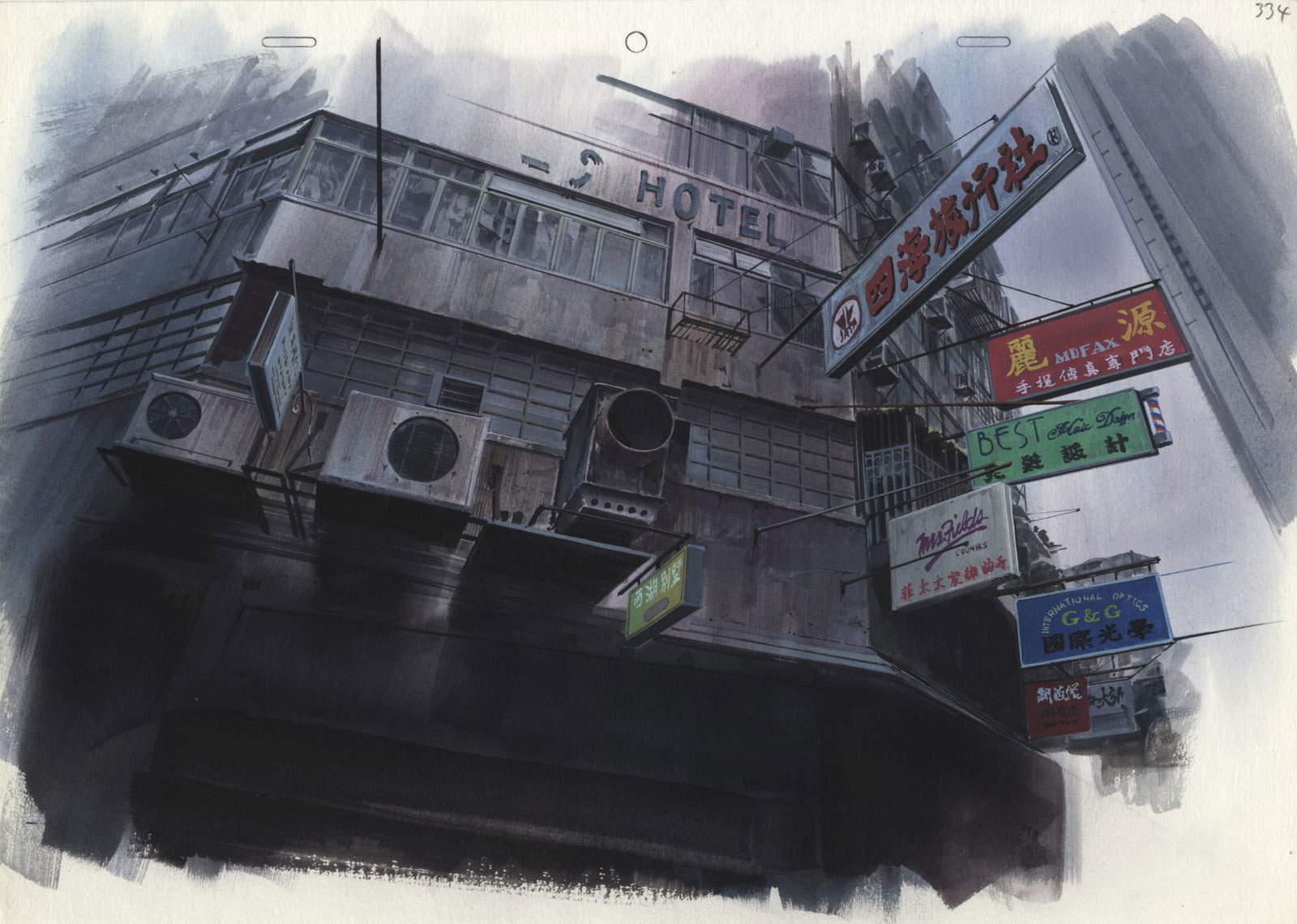All gifs in order
Akira (1988)
Patlabor 2: The Movie (1993)
Ghost in the Shell (1995)
Memories (1995)
Jin-Roh (1999)
Metropolis (2001)
Cowboy Bebop: The Movie (2001)
Ghost in the Shell 2: Innocence (2004)
xxxHolic: A Midsummer Night’s Dream (2005)
A Letter to Momo (2011)
Asura’s Wrath (2012)
Evangelion 3.0 You Can (Not) Redo (2012)
Ghost in the Shell: Arise (2013)
When Marnie was There (2014)
Your Name (2016)
Blade Runner 2022: Black Out (2017)Happy Birthday to Hiroyuki Okiura The Master of Realism, and one of the “Three Wolves” of Production IG with Kazuchika Kise, and Tetsuya Nishio being the other two. This week I covered Shinji Hashimoto an animator who’s expressionistic voyeur treats character animation more so as a swashing effect than trying to simulate real life. I also covered another Hiroyuki, Hiroyuki Imaishi who’s Yoshinori Kanada-inspired animation defies logical movement and is stooped in a stylistic tradition that has been going on for years in anime. Hiroyuki Okiura approaches his animation like neither of them, and instead is focused on the most life like motions and gestures that you could see in reality. "Okiura’s animation pushes photorealism to the limit, his scenes so lifelike that they’re often confused for rotoscoping. He draws characters with realistic proportions and weighty movement, and is a perfectionist in the minor details.” Every scene from him is based off of some form of tangible phenomena, whether he’s animating explosions, gesturing genuine character acting, or even how a human body moves in zero gravity. None of Okiura’s timing has a hint of anime exaggeration, the only thing coming close is his scrounging facial drawings when people are crying or grinning, with the way the skin folds around the nose. His volume control is second to none the only other animator coming close is one of his pupils Toshiyuki Inoue. Okiura is in another dimension as a creator, and his talent and style has resulted in two movies Jin-Roh, and A Letter to Momo, two textbook examples of lifelike anime. The true pioneer of realism in anime, let me explain why this man is a legend.
Now believe it or not in Okiura’s early days he started off as a humble mecha animator. Okiura started in-between animating at one of the youngest ages I’ve ever seen on an animator’s resume, 16 starting on an anime called Dougram. From 1981 to 1983 Okiura was in animator limbo working at Tatsunoko Productions, and especially Sunrise which I imagine would’ve been significant considering his admiration for Gundam, making his debut KA on Soukou Kikei Votoms. From there on out Okiura kept on curving through various of avenues of anime until he finally ended up as an animation director on Star Muskateer Bismarck. He animated on 8 episodes of the original series, and showed his prowess off in spades. On these episodes there is a clear portrayal of Yoshinori Kanada, but as you can see from the background animation (particularly on Episode 51) there is a strong Ichiro Itano inspiration. Okiura had incredible stamina around this time too, and although not the most complex cuts nowadays, was averaging at 20 seconds to more than a minute of animation.
From 1985-87, Okiura got better and better at animating. His animation begin to get faster there was a stronger sense of dynamics, and he also began drawing explosions more in a realistic manner. The major difference to spot is less janky timing, the explosions don’t blow out slowly on 3s and 4s there’s a sense of expansion on 1s and 2s. Dream Hunter Rem was his first time doing characters, and while it doesn’t have the physics applying inertia he’s known for now this will lead him down the road of exploring anatomical figures more and more. While the two weren’t working together, Panzer World Galient was probably the first time Okiura was made aware of Shinya Ohira as he was getting a reputation in as a young effects animator as well. On Okiura’s cut you can see him drawing much more debris rather than setting it aside for just bursts of Kanada smoke. Then we get Red Photon Zillion, Okiura’s short work on the OP begin’s to showcase a different side of him. He is way more diligent at executing one shots, and is also managing background animation, beam effects, and debris all in single takes.
Enter Black Magic M-66.
This was Okiura’s first work as an AD with Hiroyuki Kitakubo, the director of the OVA and an essential piece into fostering puzzle pieces of innovation in the world of anime. He also first met Satoru Utsunomiya a slightly older realist animator inspired by Takashi Nakamura, Kazuchika Kise who will become a long time friend of Okiura, and the aforementioned Shinya Ohira. Here Okiura is working more than ever with characters rather than volume, the spacing of his cuts are way more tight meaning more framing, and consistent drawings. One cut that stands out is a pivotal rooftop scene near the end. Several minor details stand out here. 1st Okiura is beginning to become fastidious in his debris effect, laying out every part of the building construction and how it will fall and tear apart. The second is the 3rd and 4th cut, Okiura does a great job distinguishing the human characters from the robot, its timing is slower and staggered the 4th cut also having a lot of volume with the bullets ricocheting into it with the head constantly bobbing. Volume is basically when a character is animated at different angles and the viewer is able to accurately discern that it’s the same character without any offset in design.After a brief stint on a City Hunter 2 OP, Okiura was brought to work on Akira

A magnum opus of what animation is capable of, Akira had been years in development waiting to get into the right hands. For context, Katsuhiro Otomo had already gotten a correct team into place on Genma Taisen five years earlier with two important ADs being the project’s vanguards; Koji Morimoto and Takashi Nakamura. The two had made waves with their fluid approach, and hypnotic background animation. They did two OVA’s the following year; Robot Carnival and Neo Tokyo, which essentially served as a litmus test for their talents. Morimoto and Nakamura divided up the key animators as mostly new. Some of their fellow compatriots from Genma Taisen were a mixture of both with Yasuomi Umetsu being around the same age, and Yoshinori Kanada who was a senior to them. Kanada’s contribution is famously invisible on this movie, as it had none of the hallmarks of his aesthetics at all.For staff it was a huge scout. Older animators included Osamu Nabeshima who had been a Gundam animator and Rintaro regular for a while now, Shinichi Suzuki, and Kanada…and that was basically it. Every new key animator were younger talents that had been making waves in sakuga hemispheres. The first huge chunk of talent came from Telecom; Shinji Otsuka, Toshio Kawaguchi, Makiko Futaki, Toyoaki Emura, Masaaki Endo, Hiroyuki Aoyama, Shinji Hashimoto, and one of their youngest Tatsuyuki Tanaka who made his genga debut in this amazing cut of Tetsuo’s mutating arm. The first leg of staff mentioned (Otsuka to Endo) had already worked with Mamoru Oshii and Hayao Miyazaki so the choice to bring them on was a no brainer. Former Studio Junio animator, and soon to be long time colleague of Okiura, Toshiyuki Inoue did a bulk of the opening of the movie animating nearly 5 minutes of cuts, and even managing to outdo even Nakamura in his scenes. Other freelancers included Utsunomiya, Hideki Hamasu, and Kouichi Arai. While Ohira was doing heavy effects work, and Kitakubo did a brief cut, what was Okiura doing?
Hiroyuki Okiura was in charge of the scene where Takashi (one of the Espers) is hunted by the Neo-Tokyo government forces trying to capture him.

Okiura start to end
By this point I think Okiura had started to gain a better sense of fluid character animation. Not only that, but imbuing his drawings with emotional and dramatic embellishments that greatly improve the quality of the scene. The movie is famously known for it’s prerecorded dialogue so the line up with the animation is done well. The debris at the end of the cut, and crowd layouts near the end are superbly executed for the time. Though i don’t think Okiura particularly stands out under such intense Morimoto and Nakamura corrections in his timing, the intense heft of the scene is followed through.For the next few years, Okiura kept on getting better. He became an AD next year on Nakamura’s Peter Pan No Bouken once again getting better at volume, and designated weight of certain objects. He did some brief work on Venus Wars showing why he was such a good effects animator, and then Mobile Police Patlabor: The Movie where he only had time for a few cuts. This was going on for a while where Okiura was doing just minor cuts here, and there. Devilman: The Demon Bird felt like a serious step in the right direction for his skills. One of Okiura’s best earlier scenes of him putting on a show. He’s managing so many little details from the fire to the acting, to the cuts of the monster being punched where he gets more adventurous with his movement, the neck of the creatures sways back and forward with a definitive sense of 3D volume. More steps went along ways on The Hakkenden where under some ambitious AD from Shinji Hashimoto and Shinya Ohira, Okiura bloomed as a formidable action animator.

The next year Okiura hopped on to Roujin Z
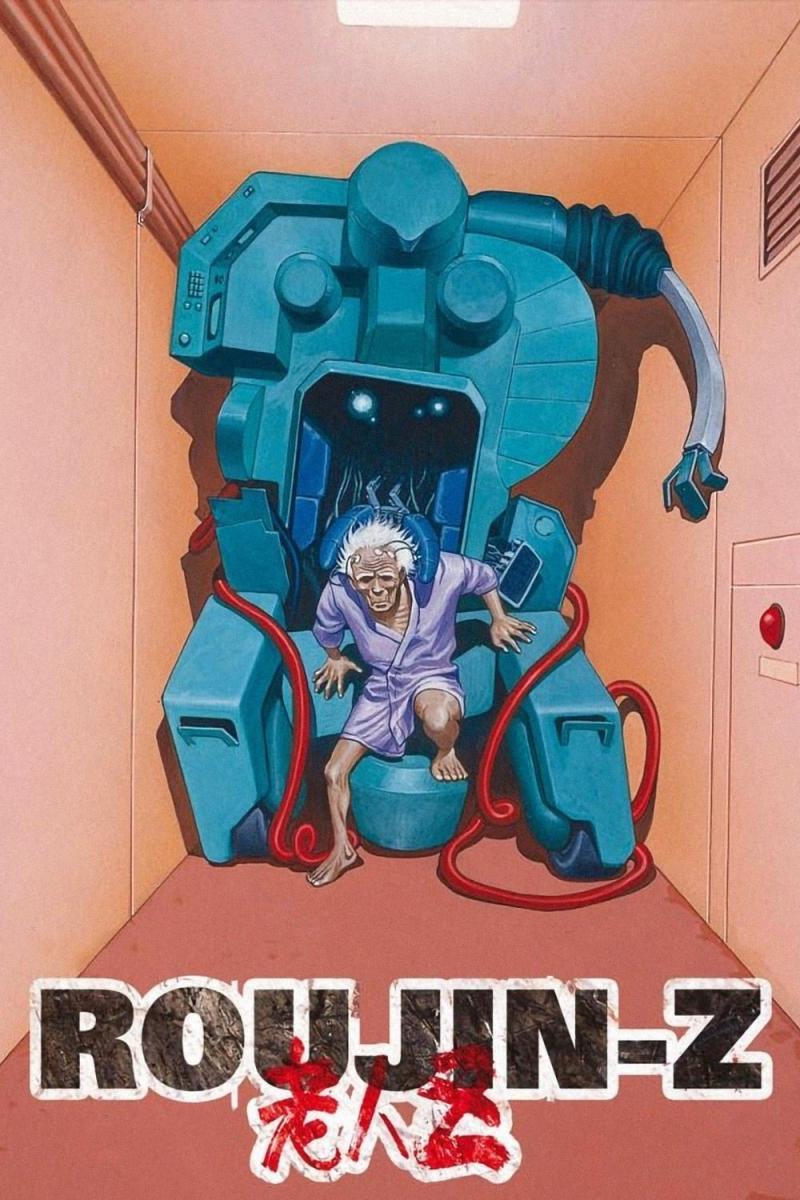
Another Kitakubo directed work, many of the Akira alumni had become super reputable. This film introduced Okiura to several legends of the industry who would support him later on. Firstly Gainax natives Takeshi Honda, Kazuya Tsurumaki, and Tadashi Hiramatsu, all coming off the heels of Gunbuster and Nadia. Their involvement would spur a long list of collaborations. You then have Mitsuo Iso, and Satoshi Kon both accompanying as a mechanical designer for Iso, and a layout artist for Kon. Okiura was a primary layout artist for most of the movie dealing with the finale where the old man has become a machine laden Lovecraftian monster. And it is a long scene. Okiura is still incredibly smooth at mecha there is no doubt about that, but his character acting is particularly more stellar than usual. There are still hints of Nakamura hinting through, but you see him becoming interested on how the body shifts weight.Okiura’s big breakout into character designer came on Hashire Melos

A forgotten film, and unfortunately impossible to find in a good condition rip. Melos sought to Okiura’s whims of becoming more interested in human proportions, and applying them with his Nakamura-esque touch. The faces in this movie do have a bit of a cartoony quality, and the anatomy feels very cavemen like but it works and fits into this era.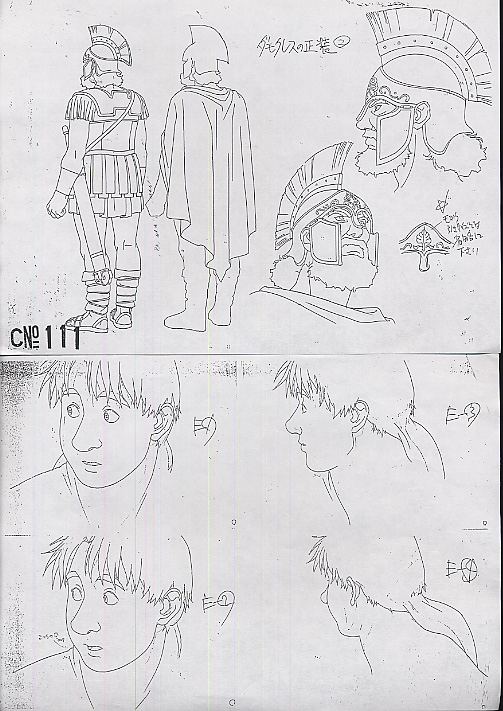
Big rounded facial features and small button eyes.
This movie illustrates the symmetry Okiura, and Inoue had around this time as the two are pretty close in quality terms of drawings. Though by this point the last few years had Inoue light years ahead of Okiura he’s still able to hold his own here. Another fellow standout, was Mitsuo Iso, who’s animation style was and is still completely different from Okiura’s in every way, but applies the same principles.The next year, 1993, everything changed for Okiura on Mobile Police Patlabor 2: The Movie

Oshii… “as far as I’m concerned, the only Patlabor I’ve made, is Patlabor 2. It’s the only thing I can proudly call my work”. A monumental achievement in animation, Patlabor 2 is an essential piece in the history of Production I.G which had grown off a reputation of doing in-between animation for several productions and held two studios. This movie cemented the aesthetics and approach of the studio, and from there on out put priorities on the table for the animation staff. “Persistent animation here thanks” and “good animation here please” is what Oshii said in his storyboard notes, and there has never been a more impressive degree of grounded mecha, and effects animation done before. The chieftains of effects animation come from Yasushi Muraki, and Okiura. Under Kazuchika Kise’s incredible AD, and defined Satoshi Kon storyboards Okiura goes off providing a slew of helicopter sakuga and explosion sakuga. You can see differences in Okiura’s and Muraki’s explosions where sakugabooru user PurpleGeth explains “the smoke expands laterally, where Muraki tends to curl it onto itself”. This movie also presented an interesting intersection with character designs, by making them look more realistic. This was becoming a steady trend in Mamoru Oshii’s filmography as he wanted to push anime more into realism, and just see what he could do. Kise’s characters paired with Kon boards makes everything feel lived in, with a looming dread of atmosphere. The film also introduced a new layout system that better allowed communication through separate departments to determine the scope of certain cuts before drawing them out. The film is regarded as one of the greatest anime features of all time, and for good reason.
Okiura and Muraki effects,
1994 saw one of Okiura’s last works on mecha for a while, on Mobile Fighter G Gundam’s first opening

Okiura 0:21-0:47
He would not return to the Gundam franchise for the next 27 years.1995, was Okiura’s biggest year as a creative, and marked the biggest change in his animation sensibilities and aesthetics on Oshii’s masterpiece Ghost in the Shell
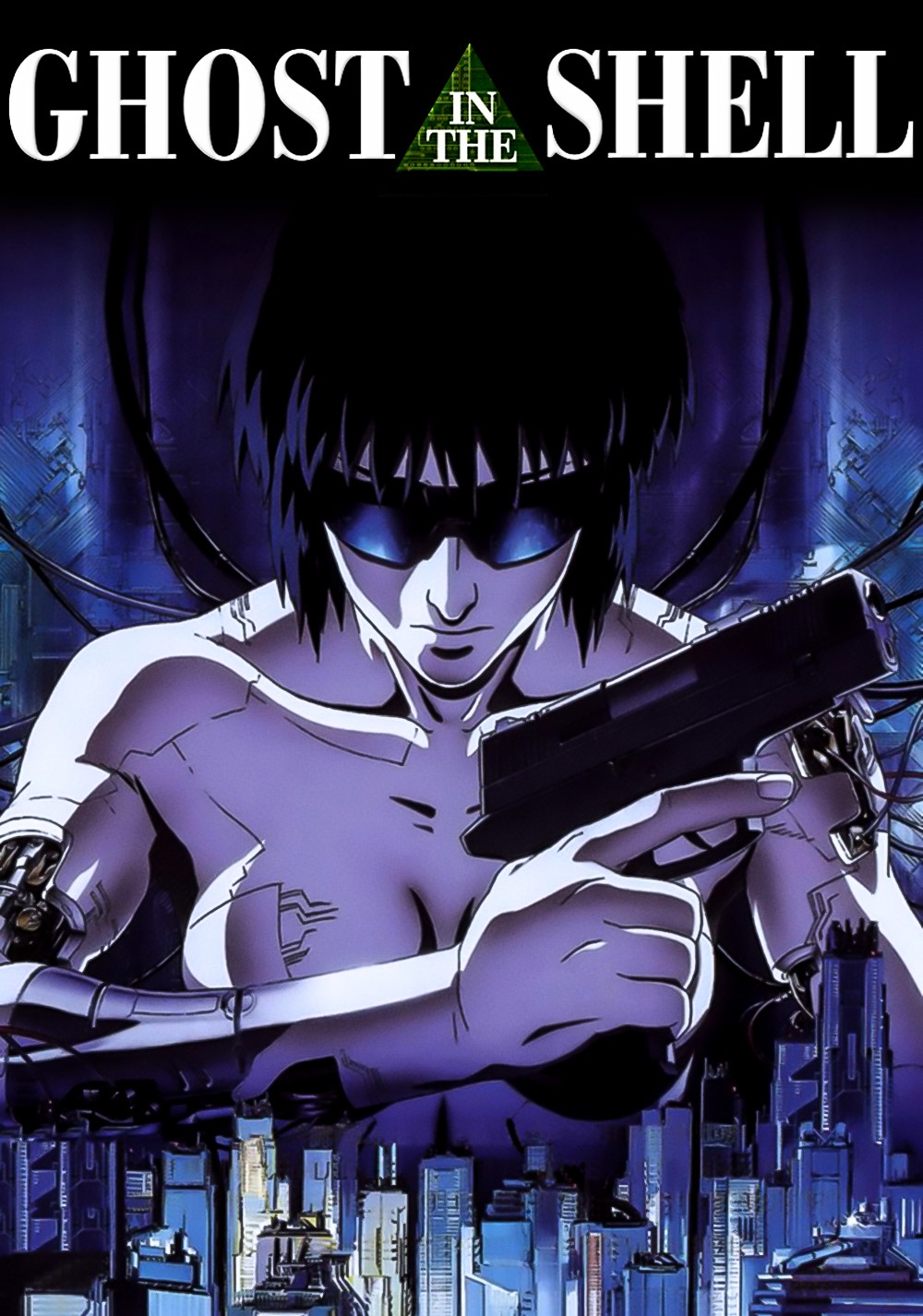

The early years of Production IG, had some of the most rare form displays of animation that would have any other anime studio blushing, not just for mere show of talent, but how they were innovating consistently on the fly. Ghost in the Shell is a superb adaptation of Matsamune Shirow’s material, from the brilliant cyberpunk laden city inspired by Hong Kong, and mechanical artwork that would influence generations. Oshii’s innovations came in the form of using clever use of cgi, using early Avid Technology, and even TIMA which was how the look of the thermo-optic camouflage was achieved. The lighting of the movie used light and darkness integrated into the cels, instead of contrasting light sources to elude a sense of depth to the image. Art Director Hiromasa Ogura called this technique “unusual”
While Toshihiko Nishikubo was credited as the film’s singular animation director, the chieftains of the checking process were Okiura and Kise, and without them the animation wouldn’t flow the way it did. Firstly Okiura was placed on character designs, instead of going for the usual anime bishoujo teen approach that was prevalent in the manga with Motoko, Okiura and Oshii opted for a more mature look applied. This would already be inevitable as realism was the key.


The rest of his characters maintained a pretty similar look from the manga


Okiura wasn’t alone as characters don’t just make a sci-fi film. You had Atsushi Takeuchi and Shoji Kawamori on mechanical designs, and Mitsuo Iso on weapons designs, with super detailed charts, as notes to the animators.




Okiura and Kise were supervising so many animator, but at no point does the consistency feel lost at any point. Being as much of a classic film as it is there is a lot of highlights. The phenomenal rooftop jump sequence is the intro scene, belonging to Toshiyuki Inoue. Inoue’s undertaking feels so realized and natural. The crazy layouts in his scene give way to some insatiable sci-fi gore and the famous hand swipe.

As luck would have it Okiura would handle the opening title credits immediately after, detailing the creation of Motoko.

Okiura start to 3:35, end cut is Inoue
This is where the Okiura animators know and love today really starts to show. Almost as if Okiura imitated these scenes with a real woman, this scene has such a grasp on an anatomy of the human body. Every inch and detail of Mokoto’s body is meticulously accounted for, and its not just the body. It’s the viscousness of liquid, the sketchy flakes, the dimensionality of the shading, the flowing tonnage of the hair as it leaves the water. This is the kind of animation that animators have nightmares over by not being able to do something better. Even the mechanical inner layer of the body is so well thought out.The rest of the film had the best animators of the 90s on it. Featuring Oshii staple animators like Atsushi Takeuchi and Toyoaki Emura. Dragon Ball action legend Hisashi Eguchi who was AD previously on Patlabor 2 made one appearance here, same with the most well regarded sakuga-ists of the 90s Masahiro Ando. Ando did layouts for the last scene.
The most famous scene of the entire movie goes to Hirotsugu Kawasaki with the shallow water fight in the middle

Whole scene Kawasaki
Kawasaki is a lesser known name in animation, due to the very small amount yet high quality of cuts he has. This scene demonstrates just how much of a specialist he truly is. Kise said some of Mokoto’s martial arts were inspired by Lau-Chan from Virtua Fighter 2, where she uses a two finger blow to the face.In the finale of the film we come to the Spider Tank which makes for a great way of Okiura and Kise carefully placing their animators.

The first round of stellar cuts goes to Mitsuo Iso (layouts only) as Motoko prepares her weapons to fight the machine. Iso comparatively to all of the animators makes uses of 2s and 3s with noticeably more janky, yet snappier animation, his most famous technique known as full-limited. The ensuing cuts have Inoue, Okiura, and Emura drawn explosions and debris, but this section is mostly Iso. For the tank, it was rumored that Iso caught a spider in a jar, and studied its movements to apply real life species into a mechanical monster. Following them Muraki takes over from 4:11-4:29, the rest is Hideki Hamasu. Hamasu’s cut goes to the extreme with the insane muscle ripping.


Kouichi Arai, and Mamoru Sasaki finish the rest of the scene. KinoFor the next film of the year it was Inoue’s turn for character designs, and under another newfangled director Koji Morimoto on his section of Katsuhiro Otomo’s Memories; Magnetic Rose

Inoue lead AD + Inoue character designs simply means stunning animation. Pair that with a script and layout by Satoshi Kon, Mitsuo Iso weapon designs, and Yoko Kanno music and you have a recipe for success. As members of the Akira crew Memories had a lot of returning animators, Arai and Hamasu, Utsunomiya, with others on including Ando, Eguchi, and veterans like Toru Yoshida. One animator similar to Inoue and Okiura was Takeshi Honda.Okiura was single-handedly responsible for the most memorable part of the short, the dream family scene

Okiura whole scene.
These characters are very much a rip on Okiura’s designs for Hashire Melos, but here they feel more realized. The long big noses carry over from Melos. An absolutely heartbreaking scene, it all plays wonderfully into the mind-bending storytelling Kon loves to portray. Okiura’s character acting is so bouncy and easy going here, though this could be a result of Inoue and him not yet committing their volumetric tricks to subtle scenes just yet
media.tenor.com/S78ZtnNrwvcAAAAC/magnetic-rose-memories.gif:500
Cuts like this have me second guessing why they didn’t (the answer is always time)After working on two huge movies Okiura was cut out for the rest of the 90s doing a few anime cuts once in a blue moon, notable mentions being Ruroni Kenshin, and Catnapped which is the very first time Okiura starts applying volume and weight to character acting. It feels significant, and unfortunately its on a not so great movie. Pretty colors though I’ll give Nakamura that.
Before Oshii directed Ghost in the Shell he originally wanted to work on an original film, a screenplay of his own by the name of Jin-Roh, a final sequel to the Hellhounds trilogy. An alternate reality setting in which Nazi Germany won World War II, where post-war they occupied Japan, denazified after a Hitler assassination, and started enforcing their rule. The plot focused around Special Armed Garrsion unit with their heavy black stormtrooper armor, and metal shielding, they were assigned anti-terrorist measures. There were running themes, of Red Riding Hood, Sewers and Dogs all serving as allegories to fight against militant authoritarianism. This got so huge in scope that Oshii directed two live action tokusatsu films including Red Spectacles, and StrayDog: Kerberos Panzer Cops, as add ons to the manga. And while those film’s aren’t necessary to the enjoyment experience of Jin-Roh it makes sense to watch if you want your enjoyment of the trilogy satiated.
Oshii reluctantly stepped down as director and additionally asked Kazuchika Kise to direct, but he had no interest. So naturally Oshii asked Okiura who after a bit of badgering, agreed. And so as lead CD, AD, layout checker, storyboard artist, and director Hiroyuki Okiura made his debut feature length film on Jin-Roh: The Wolf Brigade first released in France in November of 1999


Unparalleled political drama in anime form, Jin-Roh is a stellar debut from Okiura. Despite it’s very slow pace of development, and seldom usage of action, the movie earned its spot as an under appreciated feat of storytelling, animation, and atmosphere. This film is especially unique for introducing near completely realistic depiction of anime characters that look like Asian people.

This was very much a creative decision on Okiura’s side, and it payed off in a great way. Everything about the movie feels so real, and grounded so it’s only right to go the extra mile with this kind of immersion, if they looked like normal anime characters it could work but the illusion of reality is lost.
